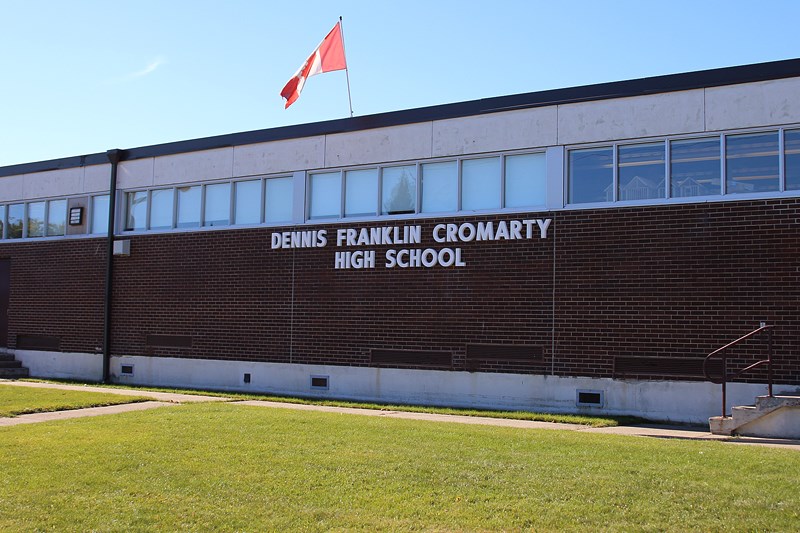Schools serving First Nations students in Ontario, including two located in Thunder Bay, will see significant upgrades after a funding commitment from the provincial and federal governments Tuesday.
Over $37 million in Investing in Canada Infrastructure Program (ICIP) dollars, funded 80/20 by the federal and provincial governments, will support school renovations and COVID-19 adaptations, as well as other projects like an addictions treatment centre.
The package includes around $10 million each for renovations at the Dennis Franklin Cromarty high school in Thunder Bay and the Pelican Falls First Nation High School in Sioux Lookout, both run by the Northern Nishnawbe Education Council (NNEC), which serves 23 remote First Nations in the Sioux Lookout District.
Work at DFC will include roof repairs, asbestos abatement, new flooring, HVAC upgrades, replacement of sewer and water pipes, and more.
Matawa First Nations will receive $5.6 million for a gymnasium at the Matawa Education and Care Centre, and to construct portable classrooms in the nine First Nations it serves.
In a release, Matawa said the investments in its students were welcome, if overdue.
“Schools in Matawa were experiencing significant challenges with meeting public health recommendations for schools since [the pandemic] began,” it stated. “The Matawa First Nations have been advocating for over a year to make schools safer expressing concerns about the lack of supplemental funding.”
The tribal council last year called for $25 million to help schools in its First Nations adapt to COVID-19, but has said few of those requests were met.
Announcing the funding Tuesday, Thunder Bay-Superior North MP Patty Hajdu said while the investments came largely through ICIP’s COVID-19 resilience stream, they would have lasting impacts by expanding access to education in the region.
“It’s about building up communities and… making them places where people have what they need to want to stay to raise their families and have successive generations staying in Northern Ontario,” she said.
The gymnasium at MECC, for example, will be a “critical piece” in the school’s ability to meet provincial COVID-19 guidelines and keep students safe, said Sharon Nate, executive director of education for Matawa.
“With an upgraded gymnasium, our students will no longer need to use other organizations’ facilities, which reduces their potential for [COVID-19 exposure],” she said.
But it will also provide major non-pandemic-related benefits to the school, which serves 150 to 200 students.
“It will mean a great deal to our students in terms of the activities that can be held in a gymnasium, that range from sports to social to cultural,” Nate said.
The gymnasium has long been planned, but increasing costs to build the MECC, which includes a 100-student residence that will launch in early 2022, left insufficient funds for the gym.
The full-size gym, which will allow MECC to host inter-school sports, is something many school communities might take for granted, Nate said, and will help build confidence, skills, and mental health among students.
First Nations including Eabametoong, Aroland, Fort Severn, Webequie, Marten Falls, and Neskantaga will receive around $200,000 each for portable classrooms. The solution will provide additional capacity as students spend more time attending school in their home communities, rather than travelling to urban centres, during the pandemic.
Other projects include $2.7 million for the Kenora District Services Board to support construction of two buildings housing Indigenous students and guardians in Sioux Lookout, and over $4.5 million for an addition to a Mississaugas of the Credit First Nation elementary school.
Some of the funding goes to non-education-related institutions.
The Ka-Na-Chi-Hih treatment centre in Sioux Lookout will receive around $1.6 million to renovate a school space to offer a long-term residential treatment program.
Meanwhile, Kiashke Zaaging Anishinaabek, also known as Gully Bay First Nation, will receive $65,880 for wastewater planning study and detailed design.
